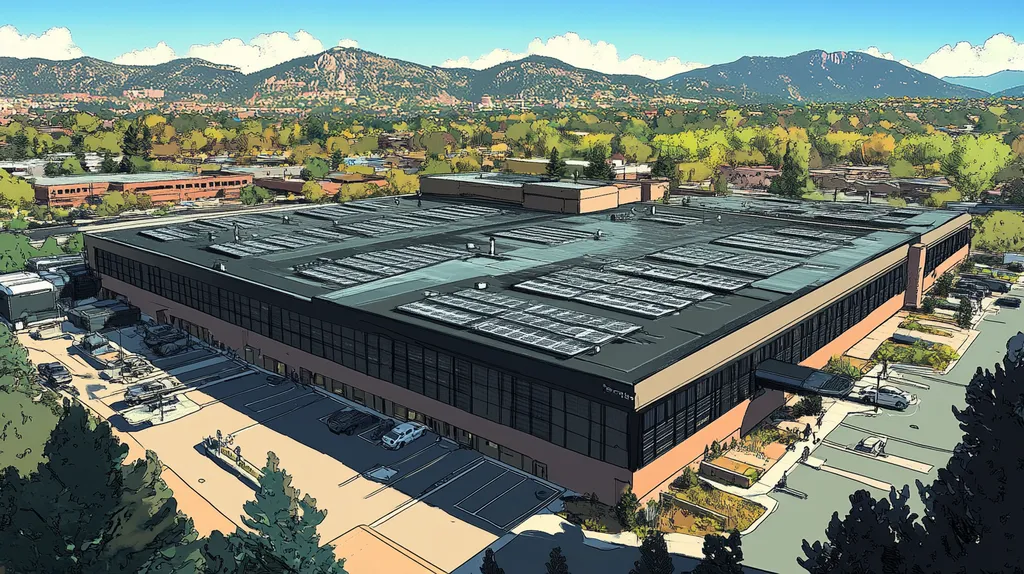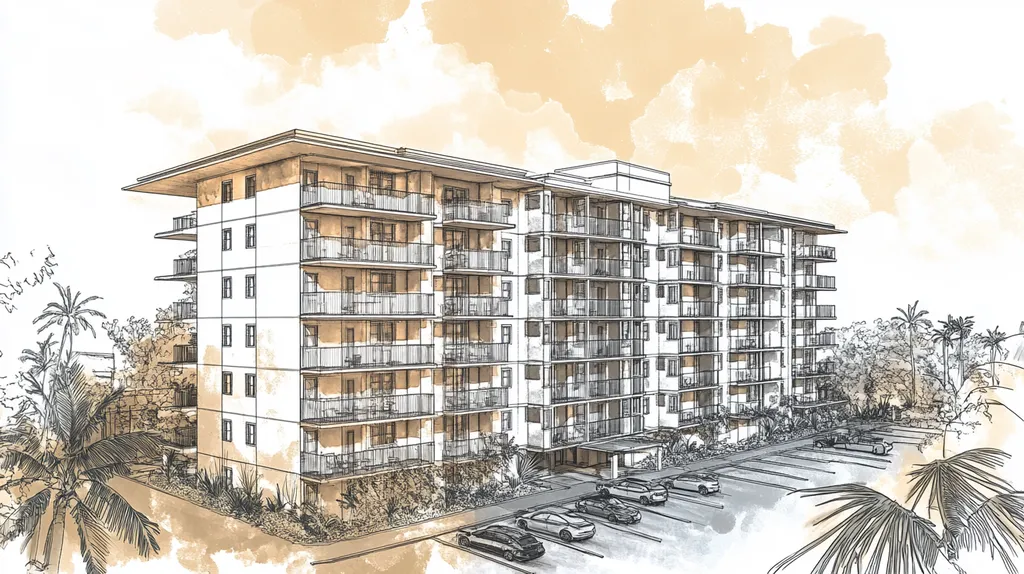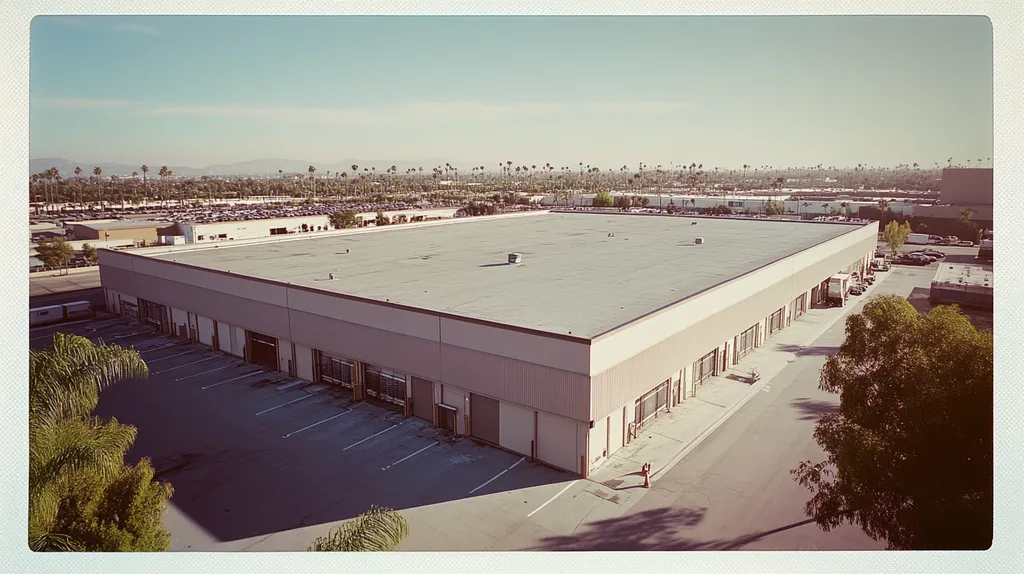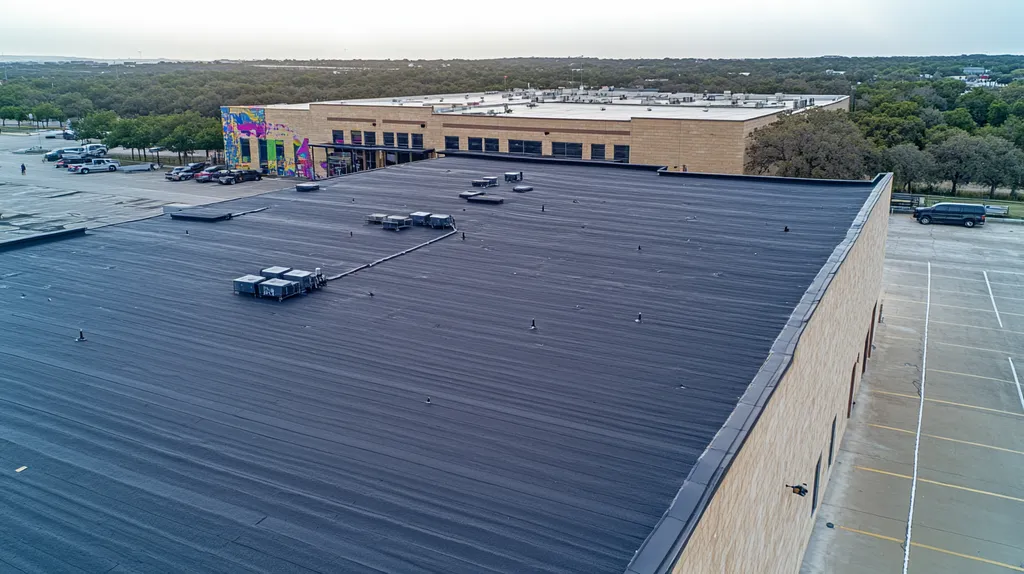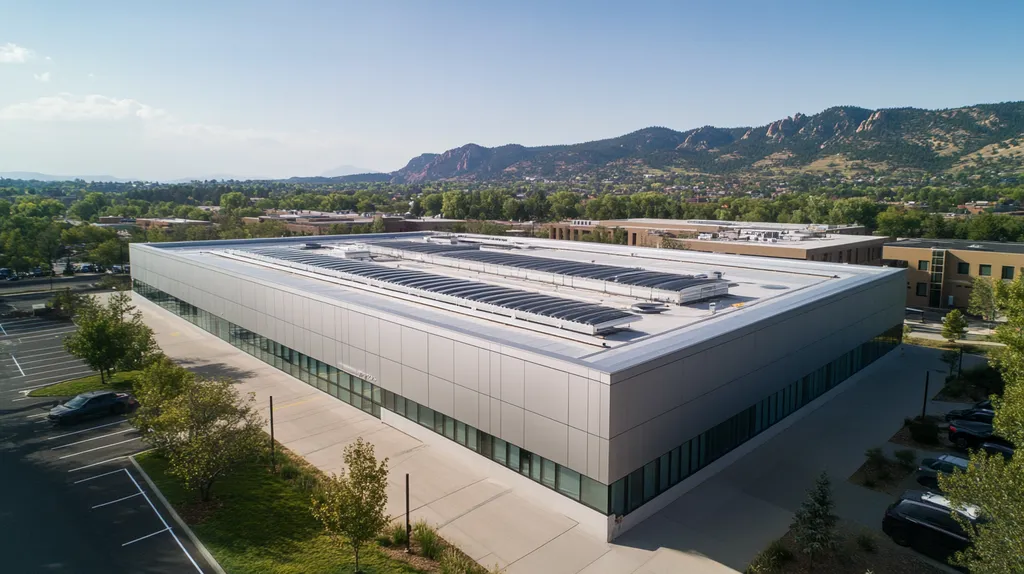In the high-stakes world of commercial roofing, proper coating certification compliance can mean the difference between a roof that lasts 20+ years and one that fails prematurely. Industry data shows that non-certified or improperly certified coatings lead to 40% shorter roof lifespans and up to $500,000 in unnecessary repairs for the average commercial building.
Understanding coating certifications has become increasingly critical as regulations tighten and energy efficiency requirements evolve. From material selection to application methods, every aspect of the coating process demands careful attention to certification standards.
This comprehensive guide examines the vital components of coating certification compliance, providing property owners and facility managers with actionable insights for protecting their roofing investments.
SECTION 1: FUNDAMENTAL CONCEPTS
The success or failure of a commercial roofing system often hinges on proper coating certification compliance. With replacement costs averaging $10-15 per square foot, improper coating choices or applications can lead to premature failures and devastating financial consequences. Recent industry data shows that buildings with non-certified or improperly applied coatings experience up to 40% shorter roof lifespans and 25% higher energy costs.
Understanding Coating Certification Standards
In the United States, FM, UL, and ASTM standards serve as the foundational benchmarks for roofing product safety and performance. These certifications establish minimum requirements for durability, weather resistance, and overall reliability. (source: Triton WP)
Each certification type addresses specific performance aspects. Energy Star certification focuses on reflectivity and thermal performance, while Cool Roof Rating Council (CRRC) ratings evaluate both initial and aged solar reflectance.
Manufacturers must regularly test their products to maintain these certifications. This ongoing verification process ensures coatings continue to meet evolving industry standards and performance requirements.
Understanding these standards helps property owners make informed decisions about coating selection. The right certified coating can extend roof life by 10-15 years while reducing cooling costs by up to 30%.
Regulatory Compliance and Industry Requirements
Local building codes and federal regulations establish minimum performance standards for commercial roof coatings. These requirements vary by climate zone, building use, and roof type to ensure appropriate protection against regional weather challenges.
Insurance providers often require specific coating certifications to maintain coverage. Non-compliance can result in denied claims, increased premiums, or even policy cancellation.
Environmental regulations increasingly influence coating requirements. Many jurisdictions now mandate minimum solar reflectance values or low-VOC formulations to support sustainability goals.
Regular updates to building codes mean that coating requirements evolve constantly. Staying current with these changes helps protect against liability and ensures continued code compliance.
Importance of Certified Applicators and Contractors
Even the highest-quality certified coating can fail if improperly applied. Certified applicators undergo rigorous training in surface preparation, application techniques, and quality control procedures.
Manufacturer certification programs typically require contractors to demonstrate proficiency with specific products. This specialized training ensures optimal coating performance and full warranty protection.
Certified contractors understand critical factors like ambient temperature, humidity levels, and cure times. This expertise prevents common application errors that can lead to coating failure.
Working with certified professionals often results in longer warranty periods and better documentation. These benefits provide additional protection for property owners’ roofing investments.
SECTION 2: SYSTEM COMPONENTS
Every commercial roof coating system relies on multiple components working in harmony to achieve certification compliance. Industry data shows that 40% of coating failures stem from incompatible or improperly specified components rather than the primary coating itself. Understanding how these elements interact is crucial, as a single non-compliant component can compromise the entire system’s certification status and lead to costly remediation.
Certified Coating Materials and Substrate Compatibility
The success of any roof coating system begins with selecting materials that meet rigorous certification standards. UL certification, particularly the Class A fire rating, represents the gold standard for commercial roof coating safety and performance. (source: Western Colloid)
Different substrates demand specific coating formulations. For example, acrylic coatings excel on metal and concrete but may perform poorly on EPDM rubber membranes without proper surface preparation.
Temperature fluctuations and UV exposure can affect coating adhesion differently across various substrates. A coating certified for use in Florida may not meet requirements for Minnesota’s extreme temperature swings.
Material thickness and application rates must align with certification requirements. Even certified products can fail if applied too thin or thick for the specific substrate.
Role of Primers, Sealers, and Topcoats in Certification
Primers serve as the critical link between substrate and coating system. The wrong primer choice can void certifications even if the main coating meets all standards.
Surface preparation requirements vary by primer type. Some require mechanical abrasion while others need chemical cleaning to achieve certified adhesion levels.
Sealers protect vulnerable areas and must maintain flexibility throughout extreme temperature changes. Certification testing evaluates this performance over simulated aging cycles.
Topcoats provide the final protective layer and often carry specific reflectivity requirements. Many jurisdictions now mandate minimum solar reflectance values for certification compliance.
Accessory Components Impacting Certification Compliance
Fasteners and mechanical attachments must meet corrosion resistance standards specific to the local environment. Coastal installations typically require enhanced protection against salt spray exposure.
Drainage components play a crucial role in system certification. Poor drainage can lead to ponding water, which may invalidate coating warranties and certifications.
Edge metal and termination details require careful attention to maintain system integrity. These components must meet wind uplift requirements while preventing water infiltration.
Penetration flashings and seals demand compatible materials that maintain certification compliance. Using non-certified sealants around roof penetrations can compromise the entire system’s certification status.
SECTION 3: IMPLEMENTATION METHODS
The difference between a successful commercial roof coating and a costly failure often comes down to proper implementation. Industry data shows that 65% of premature coating failures stem from improper application methods rather than product defects. With coating system costs ranging from $3-8 per square foot, implementation errors can translate into hundreds of thousands in unnecessary repairs and business disruption.
Surface Preparation Techniques for Certified Coatings
Successful coating application begins with thorough surface preparation that meets certification requirements. A properly prepared surface can extend coating life by up to 50% compared to rushed preparation work.
Initial cleaning must remove all contaminants, including oils, chalking, and previous coating residue. High-pressure washing alone isn’t always sufficient – specific chemical cleaners may be needed based on substrate type and contamination level.
Surface profiling creates the optimal texture for coating adhesion. Different substrates require specific preparation methods, from mechanical abrading for metal roofs to chemical etching for concrete surfaces.
Moisture testing using both electronic meters and core samples helps prevent coating failures. Even small amounts of trapped moisture can cause blistering and delamination within months of application.
Application Procedures to Meet Certification Criteria
The American Society for Testing and Materials establishes strict application protocols that must be followed to maintain certification compliance. These standards cover everything from ambient conditions to application techniques for specific coating types. (source: Roofers Coffee Shop)
Temperature and humidity monitoring throughout application is crucial. Most coatings require surface temperatures between 50-90°F and relative humidity below 85% for proper curing.
Application rates must be carefully controlled to achieve specified dry film thickness. Too thin compromises protection, while too thick wastes material and can lead to adhesion failures.
Multiple thin coats typically perform better than single thick applications. Each coat should be allowed to cure properly before subsequent layers are applied.
Quality Control and Documentation Practices
Quality control begins with material verification upon delivery. Batch numbers should be recorded and materials checked against certification requirements before opening containers.
Regular mil thickness measurements during application help ensure uniform coverage. Readings should be taken every 100 square feet at minimum, with results documented for warranty purposes.
Environmental conditions must be logged throughout the application process. These records protect both contractor and property owner if coating performance issues arise later.
Final inspection should include adhesion testing and detailed photographic documentation. This creates a baseline for future maintenance inspections and warranty claims.
SECTION 4: MAINTENANCE REQUIREMENTS
Maintaining certified roof coatings represents a critical yet often overlooked aspect of commercial building management. Studies show that 72% of coating failures stem from inadequate maintenance rather than product defects. With replacement costs averaging $4-7 per square foot, proper maintenance protocols can mean the difference between a coating lasting 5 years versus its full 15-20 year potential.
Inspection Protocols to Ensure Coating Certification Integrity
Successful coating maintenance begins with systematic inspection protocols that identify issues before they become major problems. These inspections should occur at minimum twice annually, with additional checks after severe weather events.
Core inspection elements include adhesion testing, thickness measurements, and detailed examination of high-stress areas like flashings and penetrations. Even minor signs of degradation can indicate potential certification compliance issues.
Modern inspection tools like infrared scanning and moisture mapping help detect hidden problems that visual inspections might miss. These technologies can identify subsurface issues before they compromise coating performance.
Documentation during inspections must include detailed photographs, measurements, and condition assessments. This creates a verifiable record of coating performance over time and supports warranty claims when needed.
Repair Methods Compliant with Coating Certification Standards
The U.S. Environmental Protection Agency outlines specific requirements for maintaining coating certification compliance through proper repair methods and material selection. These guidelines ensure repairs maintain both performance standards and environmental regulations. (source: U.S. Environmental Protection Agency)
Repairs must utilize materials compatible with existing coatings to maintain certification integrity. Using non-approved products, even for small repairs, can void certifications and warranties.
Surface preparation for repairs demands the same rigorous standards as initial application. This includes proper cleaning, priming, and allowing adequate cure time between repair steps.
Quality control testing after repairs helps verify that fixed areas meet original certification requirements. This includes adhesion testing and thickness measurements of repaired sections.
Scheduling and Record-Keeping for Certified Roof Coatings
Effective maintenance requires a structured schedule that accounts for seasonal challenges and coating-specific requirements. This timeline should include regular inspections, preventive maintenance, and projected renewal dates.
Digital maintenance tracking systems help ensure no required service intervals are missed. These platforms can automatically generate work orders and maintain detailed service histories.
Record-keeping must document all maintenance activities, including routine inspections, repairs, and coating condition assessments. These records prove invaluable during warranty claims or certification renewals.
Regular review of maintenance records helps identify patterns and potential problems before they escalate. This data-driven approach supports better decision-making about timing for repairs or recoating.
SECTION 5: PERFORMANCE METRICS
Understanding performance metrics for commercial roof coatings can mean the difference between a 20-year success story and a costly failure within months. With coating system investments ranging from $3-8 per square foot, choosing products without verified performance data puts millions in property value at risk. Recent studies show that buildings with properly specified coatings based on performance metrics save up to 35% on energy costs while extending roof life by decades.
Evaluating Longevity and Weather Resistance of Certified Coatings
Weather resistance testing must simulate decades of exposure in accelerated timeframes. Modern testing chambers can compress 20 years of UV exposure, temperature cycling, and moisture stress into just a few months.
Coating durability is measured through standardized abrasion and impact tests. These evaluations predict how well products will withstand foot traffic, hail damage, and routine maintenance activities.
Temperature stability across extreme ranges proves crucial for long-term performance. Quality coatings maintain flexibility and adhesion from -40°F to 180°F without cracking or delamination.
Chemical resistance testing ensures coatings can withstand acid rain, industrial pollutants, and cleaning solutions. This becomes especially important in urban and industrial environments where air quality impacts coating longevity.
Measuring Reflectivity and Energy Efficiency Compliance
The Cool Roof Rating Council provides standardized performance ratings for roofing products based on solar reflectance and thermal emittance. These metrics directly impact building energy efficiency and urban heat island effects. (source: Western Colloid)
Initial solar reflectance measurements indicate a coating’s ability to reflect sunlight when new. More importantly, aged reflectance values predict performance after years of weathering and contamination.
Thermal emittance measures how efficiently the coating releases absorbed heat. Higher emittance values mean less heat transfer into the building, reducing cooling costs during peak summer months.
Energy efficiency improvements from high-performance coatings typically deliver ROI within 3-5 years through reduced HVAC costs. These savings continue throughout the coating’s service life.
Assessing Adhesion and Impact Resistance per Certification
Pull-off adhesion testing quantifies the bond strength between coating and substrate. Minimum values vary by application but typically range from 200-400 psi for most commercial applications.
Cross-cut adhesion tests evaluate coating flexibility and substrate bonding simultaneously. This method reveals potential failure points before they develop into actual problems.
Impact resistance testing simulates hail and falling debris through standardized drop tests. Higher ratings indicate better protection against physical damage that could compromise the coating system.
Elongation testing measures a coating’s ability to stretch without breaking. This flexibility proves essential for accommodating building movement and thermal expansion across changing seasons.
SECTION 6: OPTIMIZATION STRATEGIES
Optimizing commercial roof coating systems represents a critical investment protection strategy. Industry data shows that buildings with optimized coating systems last 40% longer and consume 30% less energy than those with basic applications. Yet many property owners overlook key optimization opportunities, leading to premature coating failures that cost an average of $6-12 per square foot to remediate. Understanding and implementing these strategies can mean the difference between a roof that lasts 5 years versus 20+ years.
Enhancing Coating Performance through Certified Product Selection
The first step in coating optimization begins with selecting products that meet rigorous certification standards. The American Society for Testing and Materials (ASTM), Underwriters Laboratories (UL), and Cool Roof Rating Council (CRRC) establish critical benchmarks for coating performance, safety, and energy efficiency. (source: Roofers Coffee Shop)
Performance optimization requires matching coating chemistry to specific substrate types and environmental conditions. Different roof materials demand specialized coating formulations to achieve maximum adhesion and durability.
Climate considerations play a crucial role in product selection. Coatings that excel in hot, dry climates may fail prematurely in regions with frequent freeze-thaw cycles or high humidity.
Application thickness and coverage rates must align with manufacturer specifications for optimal performance. Deviating from these requirements, even slightly, can compromise the entire system’s effectiveness.
Training and Recertification for Applicators and Contractors
Professional certification programs ensure applicators understand current best practices and emerging technologies. Regular training helps prevent common installation errors that account for over 50% of premature coating failures.
Hands-on skill development through manufacturer training programs helps applicators master proper surface preparation techniques. This practical experience proves essential for achieving optimal coating adhesion and performance.
Safety protocols and equipment operation guidelines form core components of certification training. Well-trained crews work more efficiently while maintaining strict quality control standards.
Ongoing education requirements keep contractors current with evolving industry standards and new product technologies. This continuous learning helps optimize both application techniques and final results.
Leveraging Manufacturer and Industry Resources for Compliance
Technical support from coating manufacturers provides valuable guidance for optimizing application procedures. These resources help identify potential compatibility issues before they cause problems.
Quality control tools and testing protocols ensure consistent results across large projects. Regular monitoring helps maintain optimal coating thickness and coverage rates throughout application.
Documentation templates and inspection checklists streamline compliance verification. These resources help track critical parameters that impact long-term coating performance.
Warranty programs offer additional protection when following manufacturer-specified optimization strategies. Meeting these requirements often results in extended coverage periods and better long-term value.
The Bottom Line
With commercial roof coating failures costing property owners an average of $500,000 in repairs and business disruption, proper certification compliance has never been more critical.
Industry data shows that certified coating systems last 40% longer and reduce energy costs by up to 35% compared to non-certified alternatives.
Success requires a comprehensive approach: selecting certified materials, working with trained applicators, following rigorous implementation protocols, and maintaining detailed documentation throughout the coating’s lifecycle.
As regulations tighten and energy efficiency requirements evolve, staying current with certification standards becomes increasingly vital for protecting commercial roofing investments.
Property owners who prioritize coating certification compliance today position themselves for decades of reliable roof performance while avoiding costly premature failures.
FREQUENTLY ASKED QUESTIONS
Q. Why are coatings for commercial roofs certified?
A. Certified coatings ensure durability and compliance with safety regulations. They protect your investment from harsh weather, while non-certified options can lead to failures and increased costs, like changing out the bike helmet on a family trip. It’s crucial to choose certified coatings to extend your roof’s lifespan and maintain performance.
Q. How do component choices affect commercial roof performance?
A. Every component works together to ensure coating effectiveness. If incompatible materials are used, it can lead to failures and costly repairs. It’s like putting the wrong fuel in your car: it won’t run smoothly and might damage the engine. Selecting the correct components is essential for long-lasting performance.
Q. What best practices ensure successful application of commercial roof coatings?
A. Proper application starts with surface preparation and abiding by guidelines. Skipping steps can cause premature failures, similar to skipping the instructions when building furniture. Monitoring environmental conditions and ensuring correct application thickness are vital for achieving certification and long-lasting results.
Q. How often should I inspect my commercial roof coatings?
A. Inspections should occur at least twice a year, plus after severe weather. Regular checks help catch minor issues early before they escalate, much like taking your car in for routine maintenance. Documenting these inspections supports certifications and ensures your coating remains compliant and effective.
Q. What metrics should I consider for evaluating commercial roof coatings?
A. Key metrics include longevity, weather resistance, and energy efficiency ratings. Neglecting these factors can lead to costly failures. Think of it as checking a product’s reviews before buying; it can help ensure that your choice will stand the test of time and save you money.
Q. How can I optimize my commercial roof coating system?
A. Optimization involves selecting certified products and ensuring proper application techniques. Just as fitness requires tailored plans and consistent effort, your roofing system demands the right materials and skilled labor to enhance performance, longevity, and energy savings.
Q. Can environmental regulations impact commercial roof coatings?
A. Yes, regulations promote eco-friendly coatings with low VOCs and high reflectance. Many regions require compliance to support sustainability goals. Just as recycling helps the planet, choosing compliant coatings benefits the environment while ensuring your roof meets necessary standards and performs optimally.


